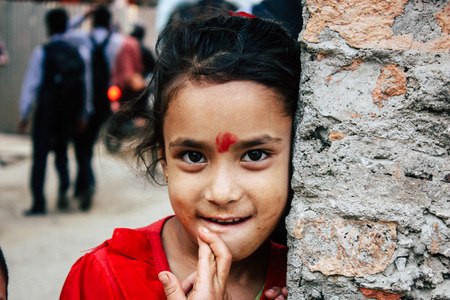Understanding the Sacredness of Mantras
In Indian culture, mantras hold a profound place, woven deeply into the spiritual and everyday lives of people across generations. A mantra is much more than just a group of words or sounds; it is considered a sacred utterance, believed to carry divine vibrations that connect the individual with higher consciousness. Rooted in the ancient Sanskrit language, mantras have been recited and chanted for thousands of years during pujas (rituals), meditation, and significant life events such as weddings and festivals. Their presence is not limited to temples or spiritual gatherings—many families begin their day by chanting mantras at home, seeking blessings for protection, well-being, and clarity. This time-honoured tradition reflects the belief that sound has transformative power, capable of purifying the mind and environment. In essence, understanding the sacredness of mantras helps us appreciate their invaluable role in Indian culture, reminding us that each syllable holds a vibrational energy meant to elevate both the chanter and their surroundings.
2. The Power of Vibration: Language and Sound
In Indian culture, the importance of mantra chanting is deeply rooted in the science of sound vibrations and the ancient wisdom of sacred languages like Sanskrit. Every syllable in a mantra is crafted with precision, as language and pronunciation are not mere vehicles for meaning but carriers of transformative energy. The unique phonetics of Sanskrit, for example, are believed to activate specific energy centers (chakras) within the body, harmonizing mind and spirit.
Unlike everyday speech, mantras rely on exact articulation. The correct pronunciation amplifies their potency, allowing practitioners to tap into a deeper state of consciousness. This is why traditional teachings emphasize learning mantras directly from a qualified guru or teacher, who can guide the student in mastering subtle nuances of sound. Each vibration resonates within the practitioner, creating positive shifts both internally and in their external environment.
| Element | Role in Mantra Chanting | Cultural Significance |
|---|---|---|
| Sanskrit Phonetics | Activates chakras and pranic flow | Preserves ancient knowledge; considered divine language |
| Pronunciation Accuracy | Ensures intended vibrational effect | Respected as key to spiritual progress |
| Sound Vibration | Cleanses mental patterns and emotional blockages | Viewed as a tool for holistic healing |
The transformative impact of these sound vibrations is not just theoretical; generations of practitioners have experienced increased clarity, emotional stability, and spiritual insight through dedicated mantra chanting. In India, families often pass down mantras across generations, with special attention paid to how each word is spoken and felt. This mindful practice reflects a deep understanding that language and sound are powerful tools for self-integration and inner harmony.
![]()
3. Pronunciation Matters: Tradition and Transmission
In Indian culture, the precise pronunciation of mantras is not just a technical detail—it is considered the very heart of their power and efficacy. The Sanskrit term “Uccharana” refers to correct enunciation, and it is believed that the vibrational quality of each syllable carries unique spiritual energy. This is why elders in Indian families pay special attention when teaching children to chant shlokas or mantras, often correcting their sounds with patience and care. Within the guru-shishya parampara (teacher-disciple tradition), this accuracy becomes even more vital. Students sit at the feet of their gurus, learning to repeat each mantra exactly as it has been handed down for generations. This oral transmission ensures that subtle nuances—such as lengthening or shortening a vowel, or emphasizing a consonant—are preserved. In Indian households, evening prayers or morning chanting sessions serve as daily opportunities for younger generations to absorb these traditions firsthand. Whether it is the gentle guidance of a grandmother during Sandhya Vandanam, or the rigorous discipline of a Vedic pathashala, correct pronunciation connects individuals to an unbroken lineage and reinforces the sanctity of the practice.
4. Regional Flavours: Mantra Chanting Across India
Indias rich cultural tapestry is beautifully reflected in the diverse ways mantras are chanted across its vast landscape. While the core essence of mantra chanting—connecting with the divine, cultivating inner peace, and invoking auspicious energies—remains unchanged, each region infuses its unique linguistic, musical, and ritualistic flavour into the practice. This regional diversity not only honours local traditions but also demonstrates how mantras serve as a living, evolving spiritual practice deeply embedded within Indian society.
The Influence of Language and Dialect
One of the most notable aspects of regional diversity in mantra chanting is language. While Sanskrit remains the foundational language for many ancient mantras, regional languages such as Tamil, Bengali, Malayalam, Kannada, Marathi, and others have become vehicles for expressing devotion and preserving spiritual heritage. Pronunciation, intonation, and rhythm often vary from state to state, reflecting both the native tongue and the cultural identity of the community.
Regional Variations in Mantra Practice
| Region/State | Local Language | Mantra Example | Distinctive Feature |
|---|---|---|---|
| Tamil Nadu | Tamil | Kanda Sashti Kavasam | Sung in melodic tunes; emphasis on poetic structure |
| Bengal | Bengali | Chandi Path | Chanted in a lyrical style with strong emotional expression |
| Karnataka | Kannada/Sanskrit | Lalitha Sahasranamam | Blends Carnatic music elements with precise enunciation |
| Maharashtra | Marathi/Sanskrit | Atharvasheersha (Ganapati Atharvashirsha) | Chanting accompanied by rhythmic clapping or instruments like taal and mridangam |
| Panjab & North India | Punjabi/Hindi/Sanskrit | Gayatri Mantra, Gurbani Kirtan | Kirtan-style group chanting with harmonium and tabla accompaniment |
| Kerala | Malayalam/Sanskrit | Narayaneeyam, Vishnu Sahasranama | Incorporation of temple-specific rituals and melodious Vedic recitation styles |
The Spirit of Unity in Diversity
This vibrant regional diversity serves as a reminder that while pronunciation and language may differ from one region to another, the underlying intention—to invoke positive energies and deepen self-awareness—remains universal. Each region’s distinctive approach offers practitioners fresh perspectives on devotion and self-care while reinforcing Indias core value of unity in diversity. Embracing these varied expressions helps cultivate greater respect for both tradition and innovation within the timeless practice of mantra chanting.
5. Self-integration Through Chanting
Chanting mantras holds a special place in Indian culture as a sacred practice for self-integration, aligning with the ancient philosophy of holistic well-being. In Indian tradition, the process of repeating mantras—whether it is the revered Gayatri Mantra or the powerful Om Namah Shivaya—is not merely a ritualistic act but a conscious journey of self-awareness that merges mind, body, and spirit. As each syllable vibrates through one’s being, practitioners are encouraged to attune themselves to the sound, breath, and intention behind every utterance.
This mindful engagement during mantra chanting fosters a heightened awareness of the present moment—a key aspect of yogic philosophy known as sankalpa, or heartfelt intention. The rhythmic repetition gently draws wandering thoughts back into focus, anchoring the mind in a state of calm and clarity. When performed with correct pronunciation and understanding of meaning, mantra chanting becomes an embodied meditation. It helps dissolve the boundaries between physical sensations, emotional fluctuations, and spiritual aspirations, reflecting the Indian ethos that well-being encompasses all dimensions of existence.
Across India’s diverse regions, families and communities often come together to chant in unison, experiencing a collective resonance that supports individual transformation. The vibrations produced by chanting are believed to harmonize internal energies—prana (life force)—enhancing vitality and emotional resilience. In this way, mantra chanting serves as a bridge between personal growth and cultural identity, empowering individuals to experience self-integration while remaining rooted in their heritage.
6. Contemporary Context: Mantras in Modern Indian Life
In today’s rapidly changing India, the ancient practice of mantra chanting continues to resonate deeply, evolving seamlessly with modern lifestyles. Across bustling cities and quiet towns, mantras are no longer confined solely to temples or sacred ceremonies—they have found new relevance in daily life, wellness spaces, and even digital platforms. Urban families may begin their mornings with a few moments of mantra recitation, infusing homes with positive energy before facing the day’s demands. In the heart of metropolitan India, yoga studios and meditation centers incorporate mantra chanting as an essential element of holistic wellness, blending spiritual tradition with contemporary self-care practices.
This integration is not just limited to personal rituals; corporate environments and educational institutions are also recognizing the benefits of collective chanting for stress relief and focus. Apps and online communities now offer guided mantra sessions, making this timeless practice accessible to tech-savvy youth and busy professionals alike. Yet, amidst this modern adaptation, respect for accurate language and pronunciation remains strong—a testament to the cultural significance placed on authenticity and intention in Indian society.
The continued presence of mantras in diverse spheres—from Ayurvedic spas to music festivals—reflects how deeply they are woven into the fabric of Indian identity. They serve as a bridge between generations, allowing young people to connect with their heritage while engaging with global trends in mindfulness and well-being. Thus, mantra chanting in modern India is more than a ritual; it is a living tradition that nurtures both individual harmony and collective consciousness in an ever-evolving world.


